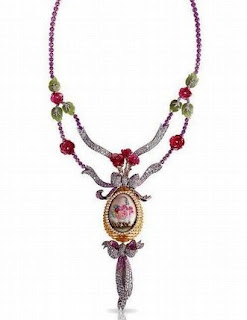By Megan Reynolds, AJP (GIA)
As you may have noticed, September is right around the corner. And if your birthday falls in September, then your birthstone is the Sapphire. With that in mind, I decided to do a little post about sapphires and their history, just for you!
An interesting thing to note is that even as late as the 18th century, all colored stones were classified simply by their color. If the stone was blue, it was called hyacinth, after the bluish flower; although later the name would be changed to sapphire. This woefully inadequate classification process is why the historic Black Prince Ruby, on a more modern day inspection, was found to be a spinel. All because hundreds of years ago, they just looked at the red color and called it ruby. Now ruby and sapphire are both a varieties of the mineral corundum, but did you know that they are actually the same stone? It’s true. Somewhere down the line it was decided that red corundum would get to keep the name ruby, separating it from all of the other colors of corundum which would be called sapphire. The really tricky thing is that the name sapphire now covered every color of the rainbow, including pink. So where do you draw the line between pink sapphire, and pinkish red ruby? Well in all honesty it’s a very fine line, but again, I digress.
So, let’s get back to our history. Sapphires have long been prized for their purported abilities as well as their velvety blue color. Clergy in the middle ages chose sapphire for their ecclesiastical rings because its color reminded them of heaven, while magicians said that it led them to prophesy and allowed them to command the spirits. Sapphire was also used as a medical aid to treat eye ailments like cataracts. King Charles V of France was even said to have owned “an oval oriental sapphire for touching the eyes”. Thought to be an antidote for poison and poisonous bites, it was said that if a venomous snake were placed in a container made of sapphire that it would promptly die. Now, my guess is that the snake died of asphyxiation rather than fear of what was basically really expensive blue Tupperware, but hey, whatever works right? The revered blue stone was also said to be able to clear the mind and skin, and to cure fevers, colds, and ulcers. And if you could afford one, it was thought to be able to combat the plague as well. Handy little stone wasn’t it?
Today, sapphires are mainly mined in Madagascar, eastern Africa, Sri Lanka, and Australia. The most prevalent color is blue, however, as we discussed earlier, sapphires come in all colors. However, the color that is most rapidly gaining in popularity is the pink sapphire. We just so happen to have a beautiful hot pink sapphire necklace in our showroom. Take a look at this stunner!
Sapphires have been coveted throughout the centuries, and that tradition rings true today. Some big time celebrities have been seen rocking blue sapphires instead of diamonds in their engagement rings. When Javier Bardem chose a ring for his sweetheart Penelope Cruz, he looked to the classic sapphire. And no sapphire engagement ring is more famous than the one currently adorning the hand of the new Duchess of Cambridge. Love their look? Make it your own with our very own interpretation. A fabulous 2.25 carat Ceylon blue sapphire is surrounded by a seamless halo of diamonds that cascade down the band and even make a surprise appearance on the basket. It is a stunning ring, from every angle.




